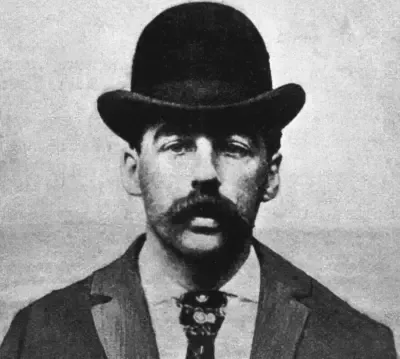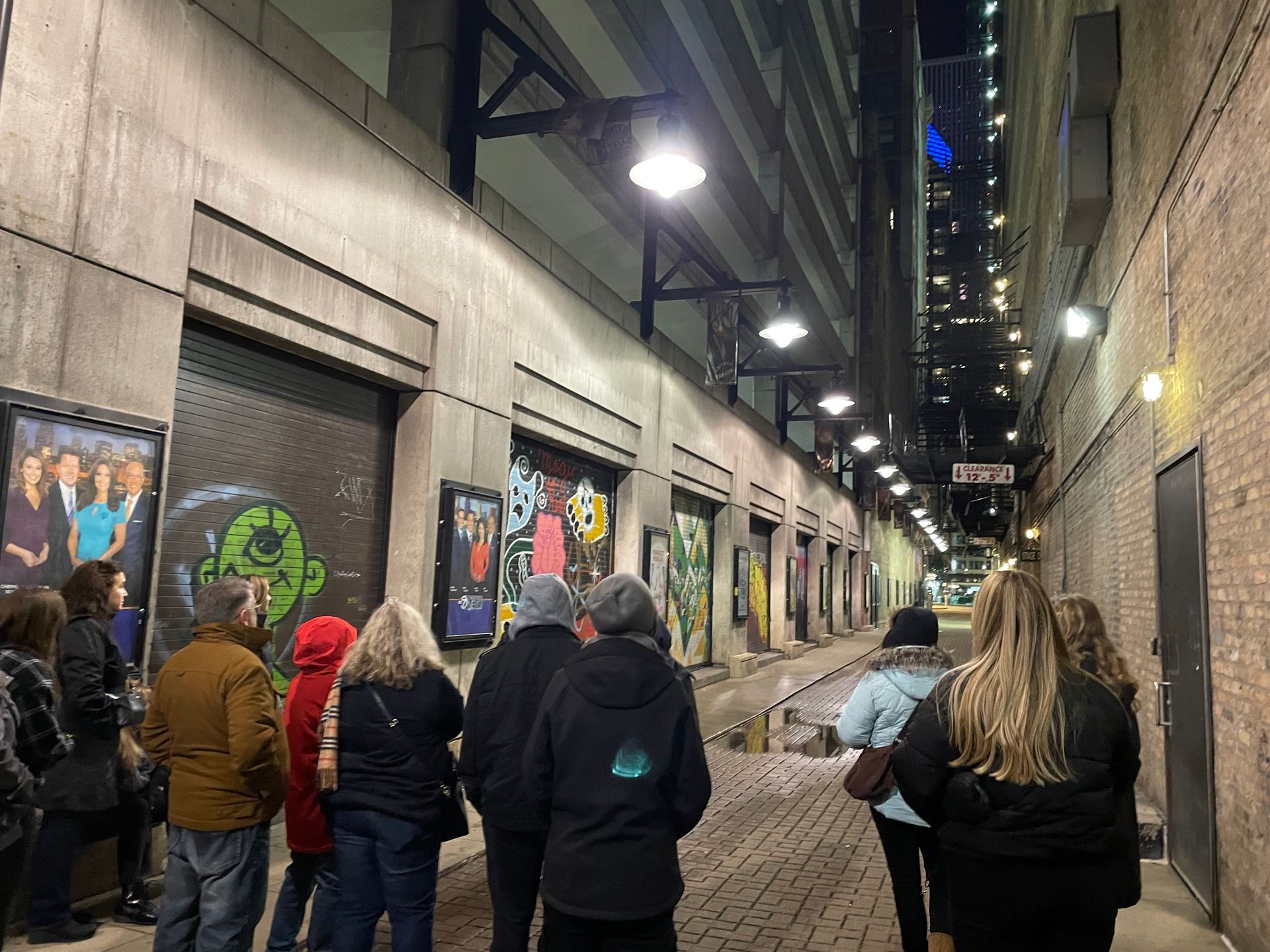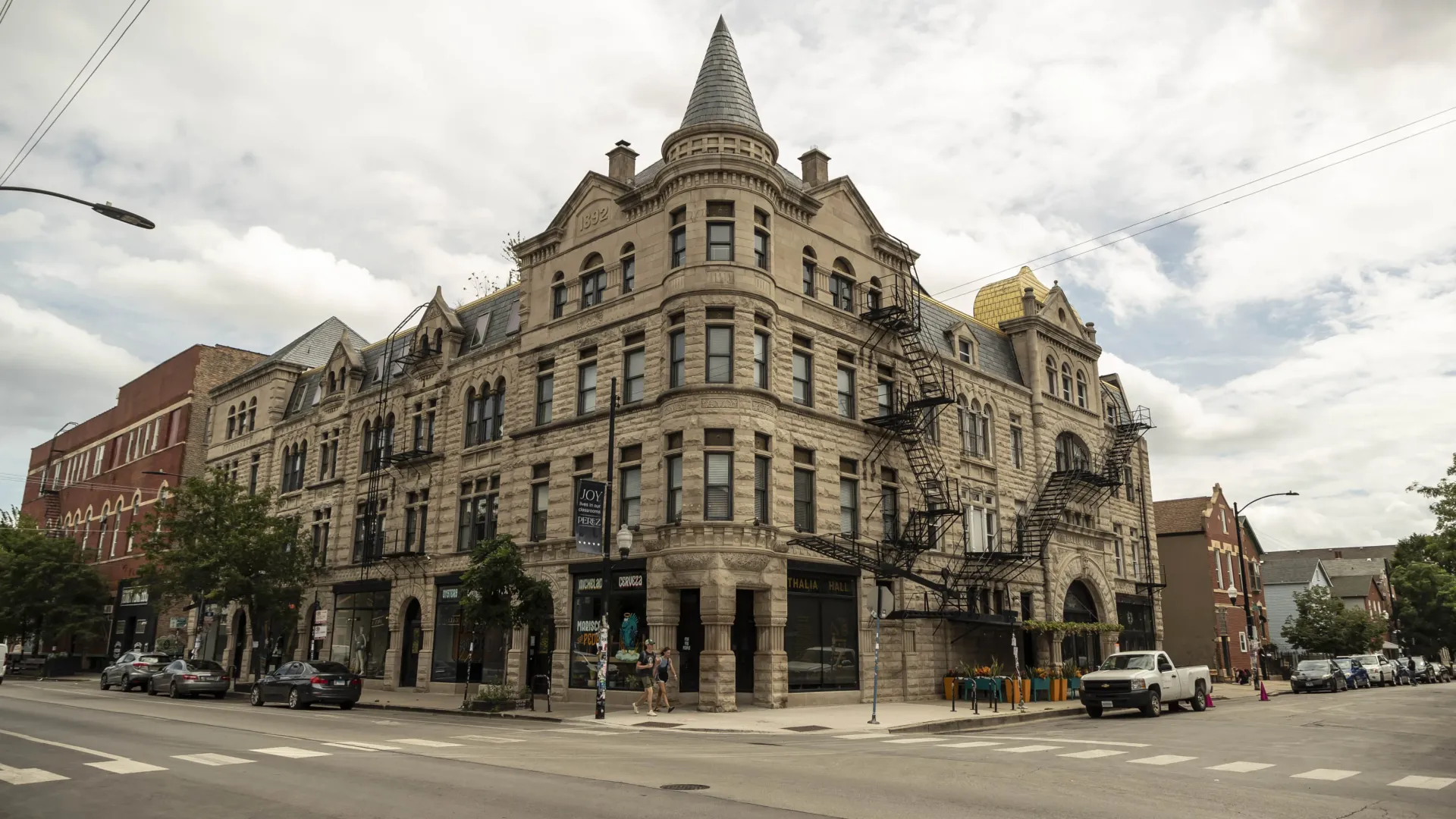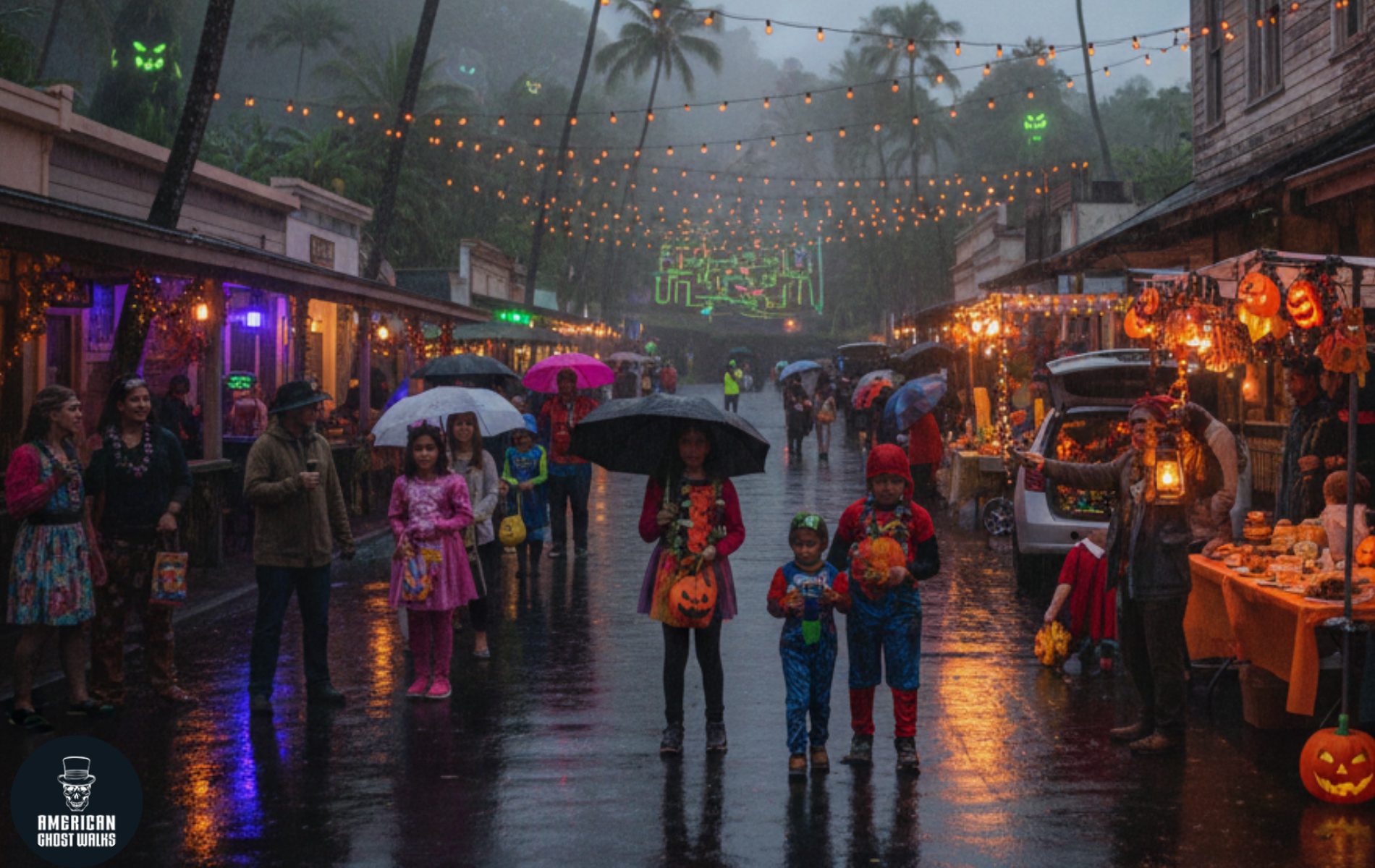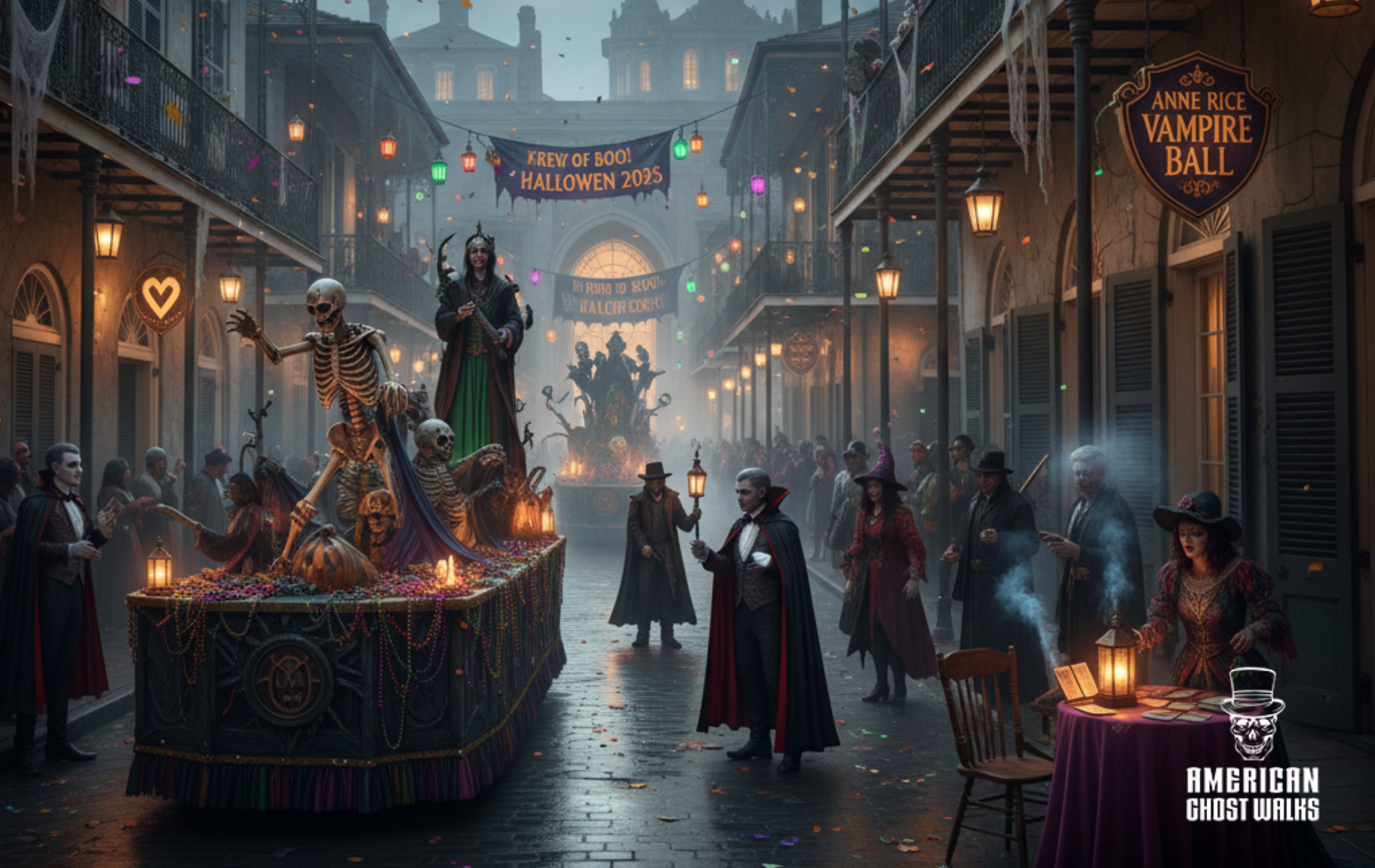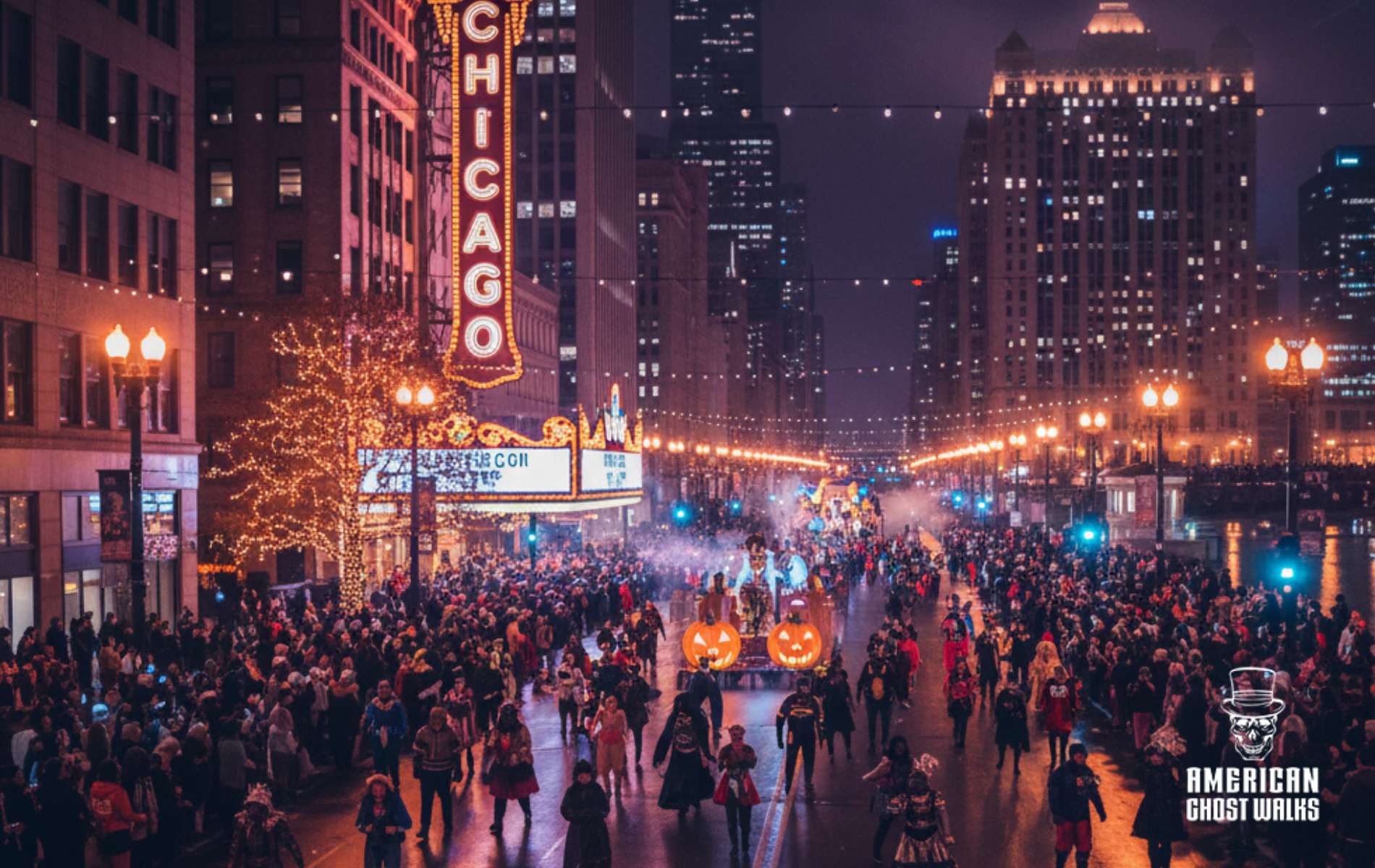H.H. Holmes Murder Castle: An Inspiration for American Horror Story Hotel
The modern horror genre is roughly 200 years old, and we have been consuming this genre in television for over 100 years. The stories and characters in television are often inspired by real people. A recent American anthology horror television series, American Horror Story, has drawn inspiration from a variety of notorious American serial killers. The Hotel Cortez in the fifth season, American Horror Story: Hotel, is said to be based on the structure that H.H. Holmes designed for killing and torturing people, also called Murder Castle.
The History of H.H. Holmes’s Life in Chicago
One of the most notorious tracts of land in Chicago is the small block along 63rd street where H. H. Holmes-- “America’s Serial Killer” --once built his “Castle for Murder.” When, in 1887, Herman W. Mudgett (alias H.H. Holmes) was hired as a shopkeeper in a drugstore in Chicago’s Englewood neighborhood, he had been officially “missing” for two years. Still a very young man, the not-quite 30-year-old Holmes had already substantially ruined his life.
About a decade earlier, he had married local girl Clara Lovering and settled down in New York for a time, where he worked as a schoolteacher before hearing the call of higher education. Holmes moved with Clara to Michigan, where he began medical school. The couple’s time together was brief, however.
Holmes sent his young wife home to her New Hampshire family; soon after, he was thrown out of school for stealing cadavers from the college anatomy lab and criminally charged for using them in insurance scams. He then “disappeared.”
A year later, Holmes was hired in Englewood, and his boss, a woman by the name of Holden, soon went missing herself. Though family members, friends, and fellow businesspeople were alarmed, Holmes explained that Holden had decided to move to California and had sold the business to him.
Holmes wasted no time in finding a second wife, ignoring the fact that his pending divorce from Clara Lovering was stuck in the legal system and, thus, not finalized. His new fiancée, Myrtle Belknap, was the daughter of North Shore big-shot John Belknap. Two years after their wedding, Belknap left Holmes. Their marriage had been an odd one at best; Myrtle lived in Wilmette with her family while Holmes continued to live on the city’s South Side.
Murder Castle Location: Crime in Plain Sight
After his second wife’s walkout, Holmes began construction of an enormous “hotel” on the property he’d purchased across from the old Holden drugstore. With money from further insurance scams, Holmes raised his Englewood “castle” to awesome heights.
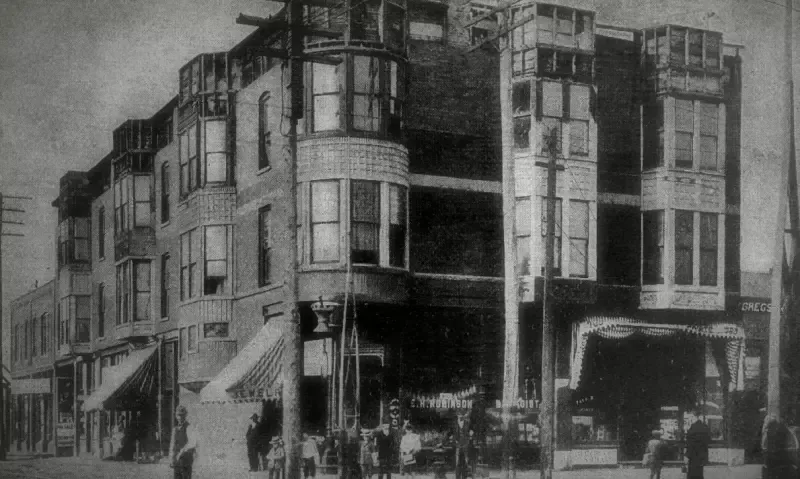
H.H. Holmes Hotel Layout
Plans for the hotel, however, resembled a funhouse of some sort: the triple-story wonder contained 60 rooms, trap doors, hidden staircases, windowless chambers, laundry chutes accessed from the floors, and a stairway that led to a precipice overlooking the house’s back alley.
In only a year, the “World’s Fair Hotel” was completed, and its owner sent out word that many of its plentiful rooms would be available to out-of-town visitors to the Columbian Exposition. And so the horror began.
Detectives and later scholars surmised that a high number of the fair’s attendees met gruesome ends at the hands of Holmes in the “hotel” he built as a giant torture chamber. It was later discovered that the building contained walls fitted with blowtorches, gassing devices, and other monstrosities. The basement was furnished with a dissecting table and vats of acid and lime. Alarms in his guest rooms alerted Holmes to escape attempts.
Some researchers believe that many were kept prisoner for weeks or months before being killed by their diabolical innkeeper. Others believe Holmes was not really “into” killing. That it was all for the money.
How Holmes Lured Victims
Along with his hotel of horrors, Holmes had other ways of attracting victims. Placing ads in city papers, he offered attractive jobs to attractive young women. Insisting on the top-secret nature of the work, the location, and his own identity, he promised good pay for silence. In the competitive world of turn-of-the-century Chicago, there were many takers.
Far from satiated, Holmes also advertised for a new wife, luring hopeful and destitute girls with his business stature and securing their trust with what must have been an irresistible charm.
After disposing of numerous potential employees and fiancées in his chambers of terror, Holmes decided to seriously find another mate. In 1893, he proposed to Minnie Williams, the daughter of a Texas realty king. Williams shared Holmes’s violent nature and lawless attitude.
Soon after they met, Williams killed her sister with a chair. Her understanding, empathic fiancé dumped the body into Lake Michigan. Yet, the two were not to live horrifically ever after.
Holmes employees Julia Connor and her daughter, Pearl, were distraught at the news that their boss would be taking a new wife. Julia had been smitten with Holmes at the expense of her own marriage, and she and Pearl had worked with their employer to pull off a number of his insurance swindles.
Not long after objecting to the coming union, Julia and Pearl disappeared. When Julia’s husband, Ned, came calling for them, Holmes told him that his family had moved to another state. In reality, Julia’s alarm over Holmes’s imminent marriage stemmed not only from mere longing but from the fact that she was pregnant with his child. Her death was the result of an abortion that Holmes had performed himself. Stuck with Pearl as an annoying witness, he poisoned the child.

In 1894, the Holmeses went to Colorado with an Indiana prostitute in tow. Georgianna Yoke had moved to Chicago to start afresh and had answered one of Holmes’s marriage ads in a local paper. Introduced as Holmes’s cousin, Minnie and Holmes saw the same thing in Yoke: a girl with wealthy parents and a substantial inheritance awaiting her.
In Denver, Minnie witnessed her husband’s marriage to Yoke, and from there the trio went to Texas, transferred Minnie’s property to Holmes, and conducted a few assorted scams.
Not long after, the group returned to Chicago and Minnie, Yoke, disappeared. Around the same time, Holmes’s secretary, Emmeline Cigrand, was literally stretched to death in the Castle basement along with her visiting fiancé.
Catching the Devil in the White City
Finally, in July of 1894, Holmes was arrested for mortgage fraud. Though his third wife sprung him with their dirty bail money, Holmes had used his short time behind bars to launch yet another scam. Holmes planned to run a big insurance fraud at the expense of early accomplice Ben Pitezel, who had served time for one of their swindles while Holmes had walked away.
Hoping to eliminate the possibility of Pitezel’s squealing on their earlier capers, Holmes planned to get richer by rubbing the man out. With a shyster lawyer in tow, Holmes killed Pitezel in his Philadelphia patent shop after taking out an insurance policy on Pitezel’s life.
When Holmes neglected to pay a share of the winnings to his old cellmate, Marion Hedgepeth (who had helped him plan the swindle), Hedgepeth turned in Holmes’s name to a St. Louis cop, who made sure the tip got to Pinkerton agent Frank Geyer.
While Geyer dug up the dirt on Holmes, Holmes was digging graves for fresh victims. After Pitezel’s death, Holmes had told his widow, Carrie, that some of Ben’s shady dealings had been found out, and that he had therefore gone to New York incognito. Holmes then took Carrie and the Pitezel children under his dubious care. The family did not know their husband and father was dead.
While on the road with Georgianna and the remaining Pitezels, Holmes decided to send Carrie back east to stay with her parents. The Pitezel children were left in the hands of Holmes, who first killed Carrie’s son, Howard, in an abandoned Indiana house, and then gassed her daughters after locking them in a trunk while the group was staying in Toronto.
Next, Holmes returned to his first wife Clara and, after explaining that he had had amnesia and mistakenly married another woman, was forgiven.
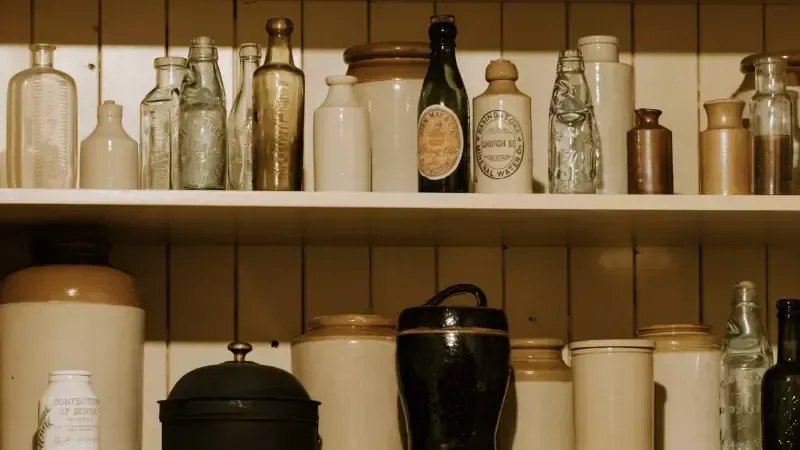
Whatever devilish plans Holmes had for his first love were thwarted when he was charged with insurance fraud. Holmes pleaded guilty while Frank Geyer searched the castle with police. What they found was astounding: the torture devices, the homemade gas chambers, the shelves of poison and dissection tools, the vats of lime and acid; all revealed the true criminality of the man being held for mere fraud.
Evidence of the purpose of the grim house was easy to find: a ball of women’s hair was stuffed under the basement stairs, Minnie’s watch and dress buttons remained in the furnace, bits of charred bone littered the incinerator. Through the hot summer of 1895, crews worked to unearth and catalog all of the building’s debris.
Then, in late August, the Murder Castle burned to the ground in a mysterious fire, aided by a series of explosions. Gasoline can verified arson, but no one could tell if it was one of Holmes’s many adversaries or the man himself that had done it.
Holmes' Execution
Holmes was sentenced to death in Philadelphia, where he had killed his old accomplice. On May 7, 1896, he was hanged, to the relief of a nation and, particularly, Chicago, the city that had unknowingly endured the bulk of his insanity. Some claimed that at the moment of his hanging, Holmes cried out that he was the notorious London butcher, Jack the Ripper. Others swear that when Holmes’s neck snapped, a bolt of lightning struck the horizon on the clear spring day.
The fact that Holmes remained alive with a broken neck for nearly 15 minutes after the execution fueled the belief that his evil spirit was too strong to die. Rumors of a Holmes curse abounded during the months and years that followed.
Dr. William Matten, a forensics expert who had testified against Holmes, soon died of unexplained blood poisoning. Next, Holmes’s prison superintendent committed suicide. Then, the trial judge and the head coroner were diagnosed with terminal diseases. Not much later, Frank Geyer himself fell mysteriously ill.
A priest who had visited Holmes in his holding cell before the execution was found beaten to death in the courtyard of his church and the jury foreman in the trial was mysteriously electrocuted. Strangest of all was an unexplained fire at the office of the insurance company that had, in the end, done Holmes in. While the entire office was destroyed, untouched was a copy of Holmes’s arrest warrant and a packet of photos of Holmes himself.
The eerie string of Holmes-related deaths stretched well into the twentieth century, ending with the 1910 suicide of former employee Pat Quinlan who, many believed, had aided Holmes in his evil enterprises at the Murder Castle. Those close to Quinlan told reporters that the death had been long in coming; for years, they said, Quinlan had been haunted by his past life with Holmes, plagued with insomnia, driven at last to the edge and over.
Some still say that it was Holmes himself that had haunted the boy and that the Monster of 63rd Street had finally gone away, taking with him the one person who could reveal all the secret horrors of Holmes’s brutal heart.

Sites of Holmes' Lingering Spirit
While the Murder Castle is long gone from the Englewood landscape where H.H. Holmes once walked, his evil spirit seems to inspire the bad seeds scattered in his old neighborhood. While the working-class and the woefully poor struggle to make a life here, others continue Holmes’s gruesome tradition, carrying out the serial murders and random slayings that have long plagued the South Side Chicago neighborhood and its bordering areas.
Those Englewood residents familiar with the area’s dark history may pause at the corner of 63rd and Wallace and wonder about one man’s legacy. Chilled by half-remembered rumors and all-too-real headlines, they may hurry home, looking behind and listening, remembering the old neighborhood and the secrets it keeps.
After his capture, Holmes confessed to killing 27 people in his Murder Castle, only a fraction of which police were able to confirm. Many historians, however, believe his brief claim of killing more than one hundred victims was closer to the truth: there are some who believe his victims may have numbered as many as 200 or more.
No excavation of the site was ever done.
During the filming of “The Hauntings of Chicago” for PBS Chicago’s station WYCC, our team interviewed postal employees on staff at the Englewood branch of the United States Postal Service, which was built directly adjacent to the Murder Castle property after it was torn down in 1938. Several employees attested to strange goings-on in the building, especially in the basement, which some people believe shares a foundational wall of the original Castle, which stood on the corner next to the current post office structure.
One employee shared a chilling story of hearing a sound in the basement and poking her head around a corner to see if her colleague was there. She called out to her but heard no answer and saw nothing down the hall but a row of chairs lined up against the wall. A minute later, when she returned to the hall, the chairs had all been stacked up on top of each other. Other employees have seen the apparitions of a young woman in the building or on the grassy property where the Castle once stood, and the sound of a woman’s singing or humming has also been heard in various parts of the current building.
Descendant of Holmes' Encounter with His Spirit
Most compelling of all have been the experiences of Holmes’ own descendent, Jeff Mudgett, who has visited the site numerous times since discovering the gruesome ancestor in his family line. Attempting to make peace with this dreadful reality of his life, Mudgett wrote the book Bloodstains—a heartfelt journey through his revelations and remembrances, and his hopes to help heal the family lines of his grandfather’s victims.
Mudgett went on to pursue the truth behind his ancestor’s chilling, death row claim that he was London killer Jack the Ripper. The beginnings of his search are documented in the History Channel’s miniseries, “American Ripper,” which culminates in the exhumation of Holmes’ body from its grave in Holy Cross Cemetery in Lansdowne, Pennsylvania.
Jeff Mudgett is not finished with his search for answers from his ancestor’s shrouded story. Part of his plans included the exhumation of the Murder Castle site and the placement of a memorial plaque there, where an untold number of victims died during that matchless Chicago year of triumph and tragedy.
When Jeff first visited the site of the Murder Castle employees of the Englewood post office told him of the basement, "Don't go down there. It's a terrible, haunted place." Mudgett experienced severe physical and emotional effects from the visit. He says:
"Before I walked down those steps I was a non-believer. Absolutely non. I would have walked into any building in the world. An hour later, when I came out, my whole foundation had changed. I was a believer."
Bone-chilling stories and accounts like these inspire some of our most terrifying horror movies. While the thrill of fabricated jump scares is entertaining, it doesn't compare to visiting the haunted places in Illinois here real horror occurred and seeing the places where there are multiple accounts of their spirit lingering.
Visit Prairie Avenue's historic district, the World's Fairgrounds, and Murder Castle on our Devil in the White City Tour. We hope to see you there if you dare. If you want to read more about a spine-tingling castle ghost story, Check out the haunting tale of the "Murder Castle".
Uncover the Chilling Secrets of Chicago's Murder Castle
Step into the dark and twisted history of H.H. Holmes and his infamous Murder Castle. Discover the spine-tingling tales of Chicago’s most notorious serial killer, whose labyrinth of horrors inspired stories like American Horror Story: Hotel.
Explore the streets where Holmes lured his victims and uncover the chilling details of his deadly crimes.
Whether you're a fan of true crime, a history buff, or simply seeking a haunting adventure, our Devil in the White City Tour offers a gripping look into Chicago's shadowy past. Check out our
Chicago ghost tour reviews on Google to see why this tour is a must-experience. Ready to embrace the eerie? Reserve your spot today!
Don't miss your chance to walk in the footsteps of America’s first serial killer. Experience the infamous Murder Castle Ghost Tour in Chicago, IL, and face the terrifying truth—if you dare!
Dive deeper into the mysterious world of hauntings with our curated collection of paranormal investigations and ghostly encounters. Read more stories like this in “Ghosts of Lincoln Park: A Chicago Hauntings Companion” by Ursula Bielski, a book of downtown Chicago ghost stories written by our own American Ghost Walks team. Click here for more.
Dive deeper into the mysterious world of hauntings with our curated collection of paranormal investigations and ghostly encounters. Read more stories like this in “The Original Chicago Hauntings Companion” by Ursula Bielski, a book of Chicago ghost stories written by our own American Ghost Walks team. Click here for more.
Are you fascinated by the supernatural and craving more spine-tingling tales? Whether you're a skeptic seeking evidence or a believer looking for your next supernatural fix; "American Ghost Books" offers everything from historical haunted locations to firsthand accounts of paranormal experiences.
Each book has been carefully selected to provide authentic, well-researched stories that will keep you turning pages well into the night. Don't let your curiosity about the supernatural remain unsatisfied – explore our collection and find your next ghostly adventure today!

